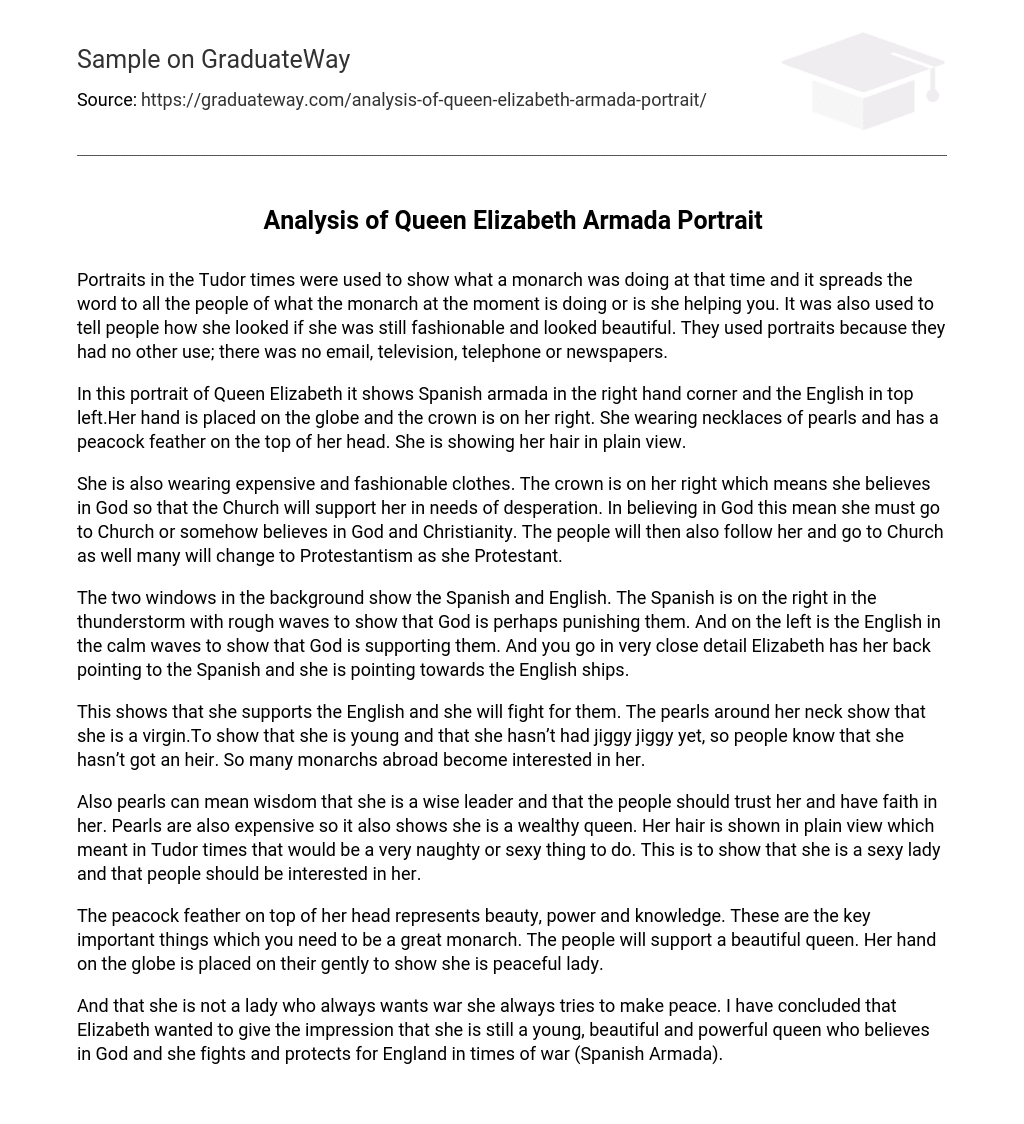Portraits in the Tudor era served as a means to inform the public about the activities and appearance of the monarch. These paintings were essential for spreading awareness and conveying whether the ruler was aiding or assisting individuals. Furthermore, portraits offered insights into the monarch’s fashion sense and physical beauty, serving as a visual testament to their ongoing relevance and attractiveness. Given the absence of modern communication methods such as email, television, telephone, or newspapers, portraits became the primary medium for disseminating such information.
The portrait depicts Queen Elizabeth with the Spanish Armada visible in the right-hand corner and the English fleet in the top left. Queen Elizabeth’s hand rests on a globe, and her crown is positioned on her right side. She is adorned with pearl necklaces and has a peacock feather adorning her hair, which is fully visible.
She is adorned in costly and trendy attire, with the crown positioned on her right side, symbolizing her faith in God and her expectation that the Church will provide assistance in times of desperation. Believing in God necessitates attending Church or subscribing to the principles of Christianity. As a result, the populace will emulate her example and also attend Church, with many converting to Protestantism if she happens to be a Protestant herself.
Two windows are depicted in the background: one showing the Spanish, and the other displaying the English. The Spanish window displays a thunderstorm with rough waves, potentially indicating divine punishment. Contrarily, the English window features calm waves, symbolizing God’s support for them. Additionally, Elizabeth is positioned in great detail with her back facing the Spanish window, while her hand gestures towards the English ships.
This indicates her support for the English and her determination to defend them. The pearls adorning her neck symbolize her purity, signifying her virginity. These pearls serve as a declaration of her youth and the fact that she has not yet engaged in intimate relations, indicating that she has not produced an heir. As a result, numerous foreign monarchs become intrigued by her.
Furthermore, pearls symbolize wisdom, conveying the notion that she is a sagacious ruler deserving of the public’s trust and confidence. Additionally, pearls signify wealth, highlighting her status as a prosperous queen. Moreover, her prominently displayed hair violates societal norms of the Tudor era, conveying a sense of naughtiness or allure. This serves to emphasize her captivating demeanor and allure society’s fascination towards her.
The peacock feather positioned atop her head symbolizes beauty, power, and knowledge – qualities essential for a remarkable ruler. The populace tends to rally behind a queen possessing outward beauty. Moreover, her hand delicately rests upon the globe, illustrating her embodiment of serenity and peace.
Elizabeth is portrayed as a lady who seeks peace instead of war, while also maintaining her youth, beauty, and power as queen. She demonstrates her faith in God and her dedication to defending England during times of war, such as the Spanish Armada.





